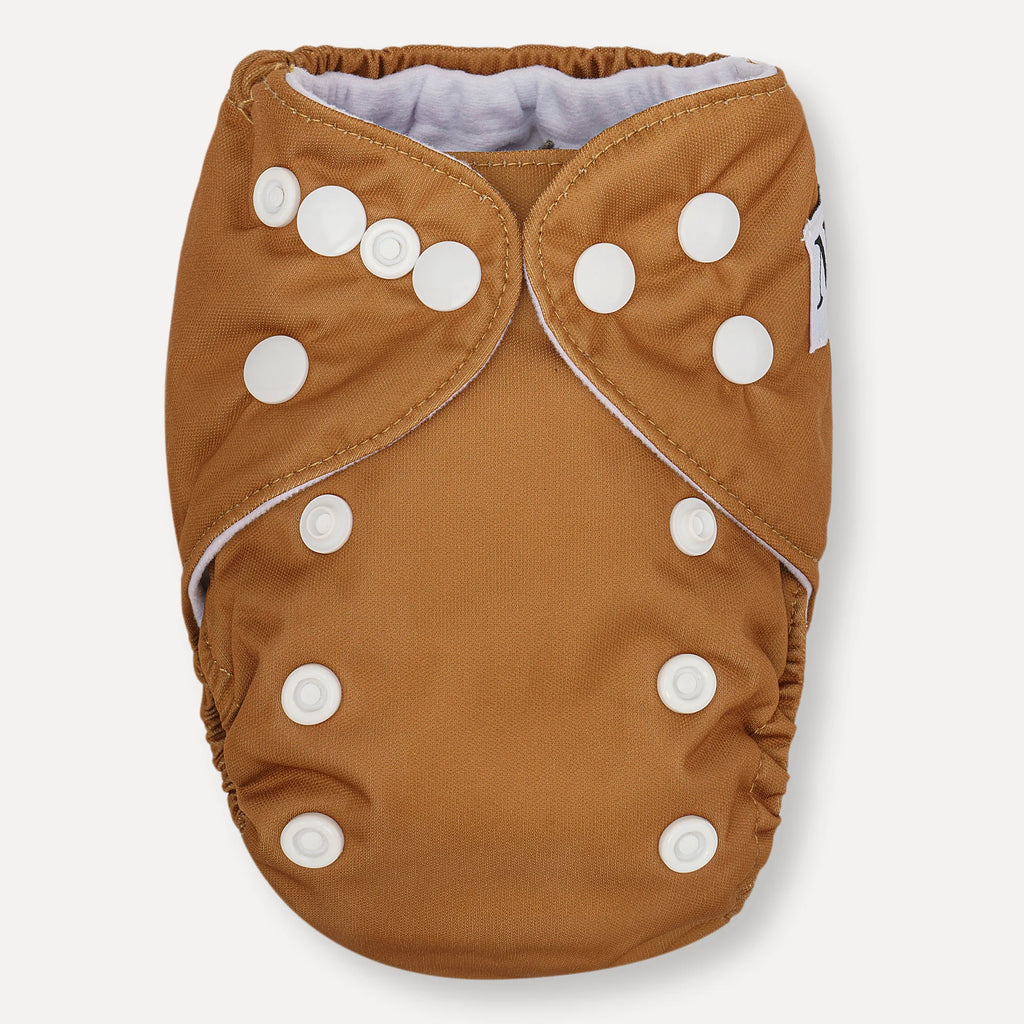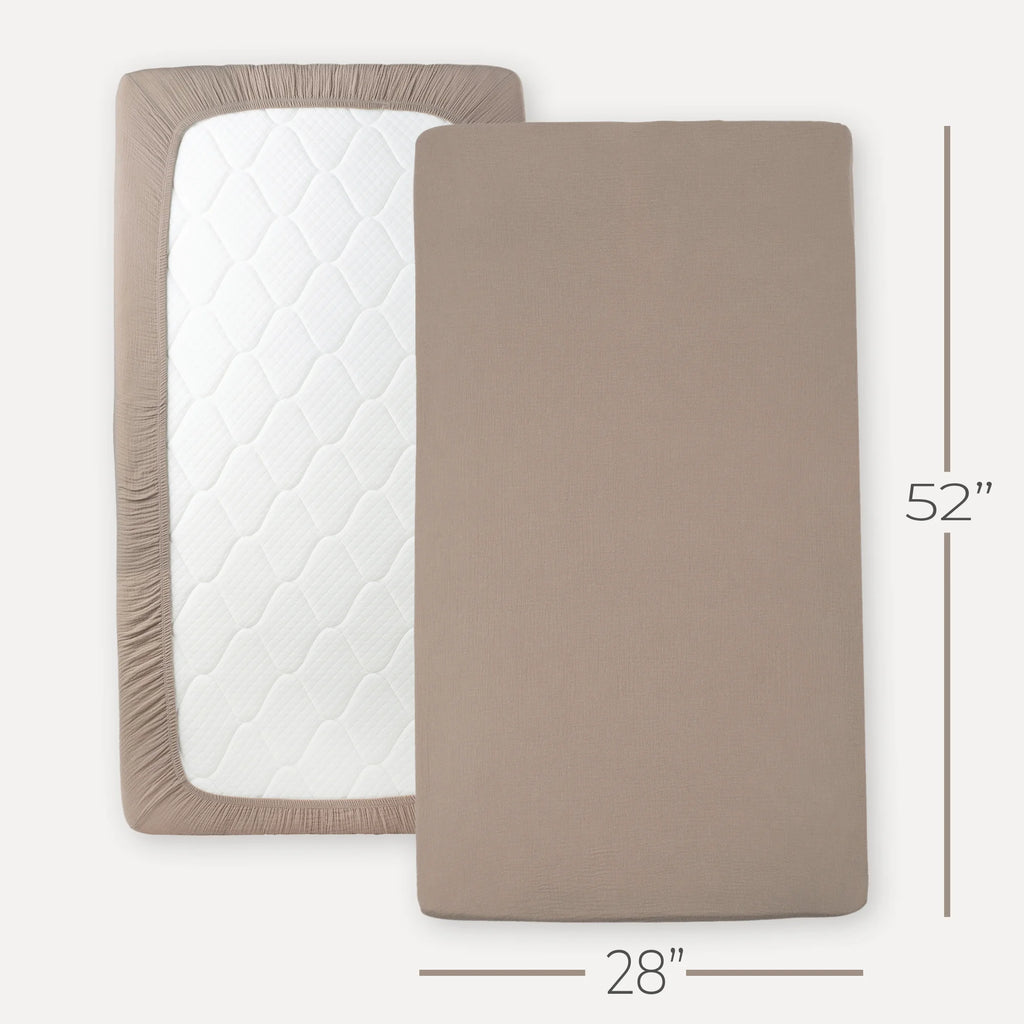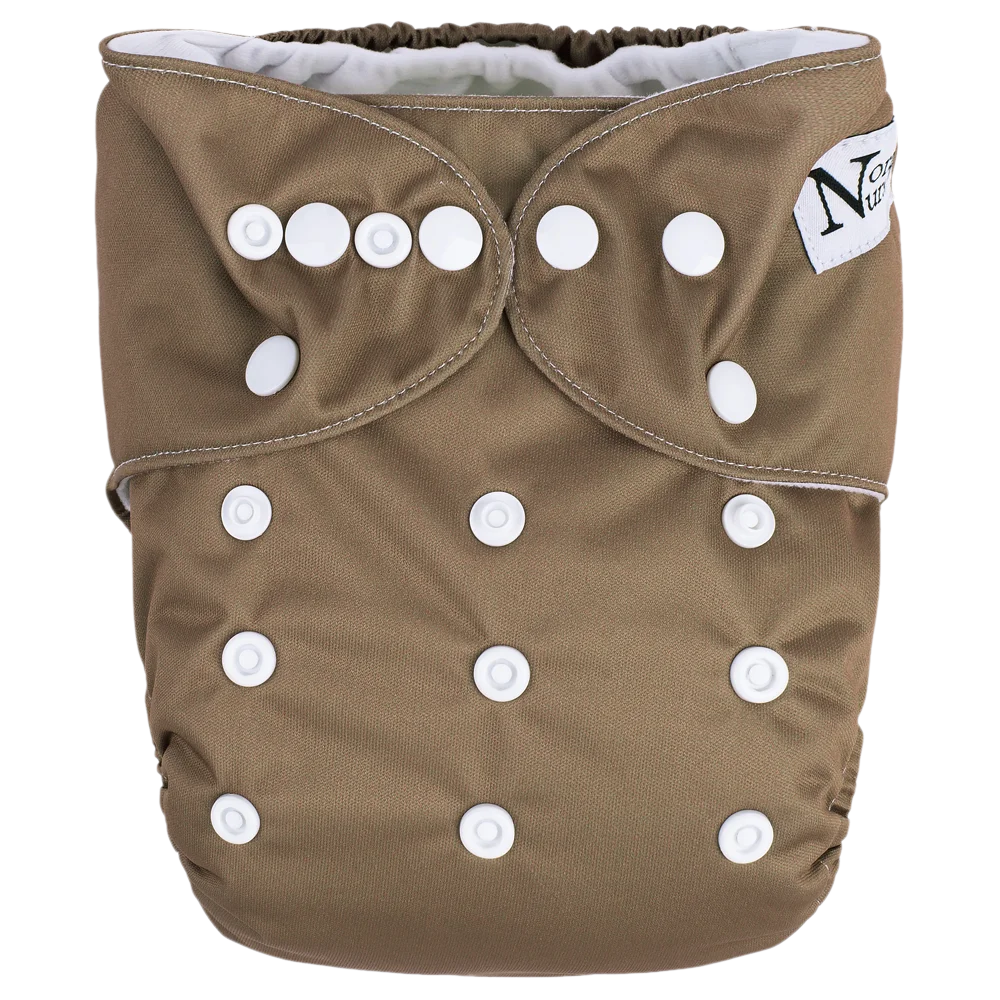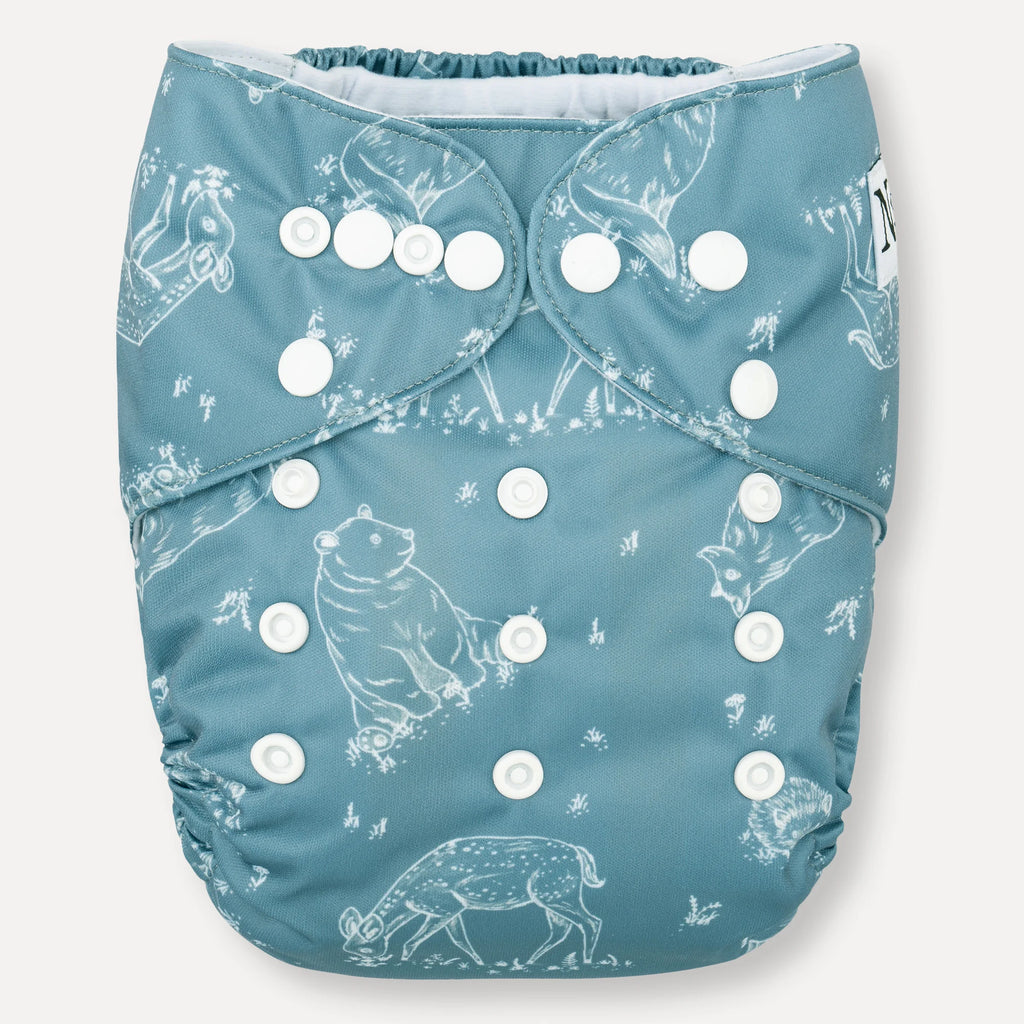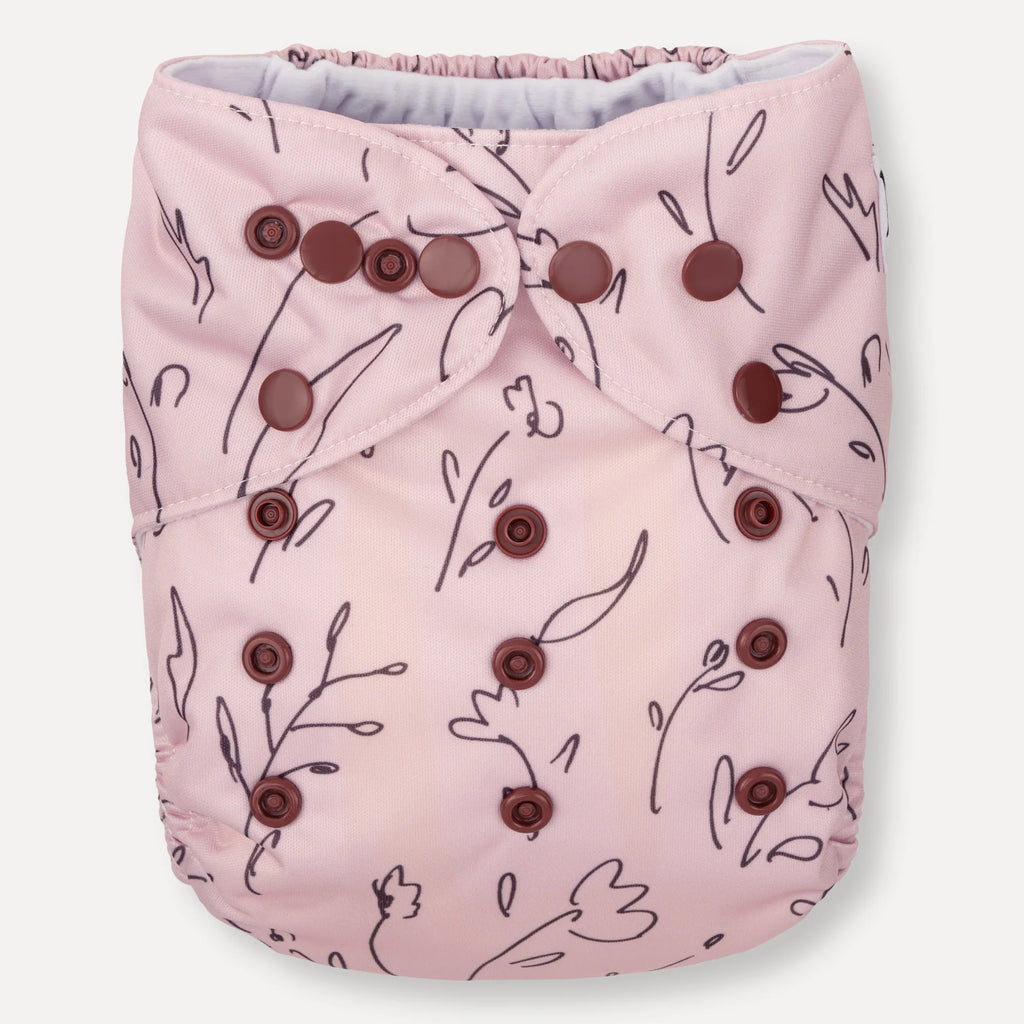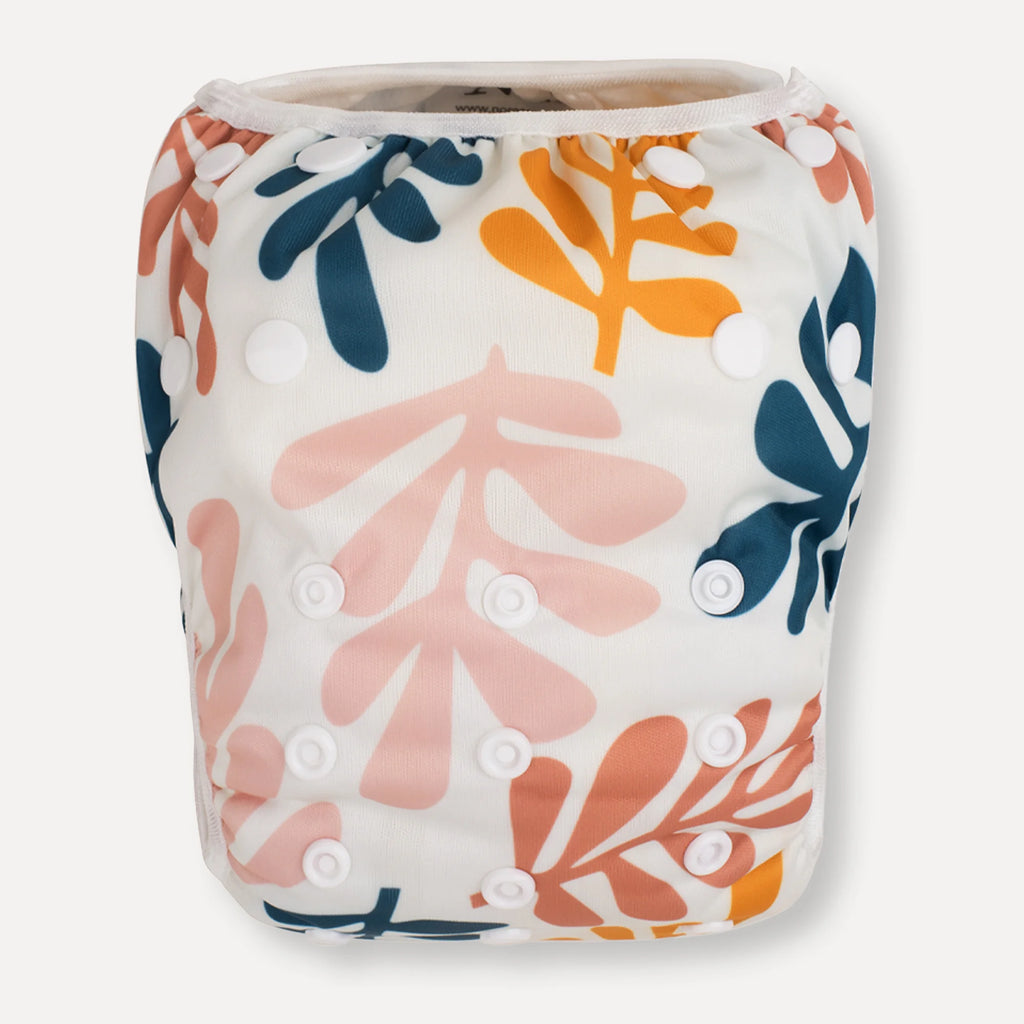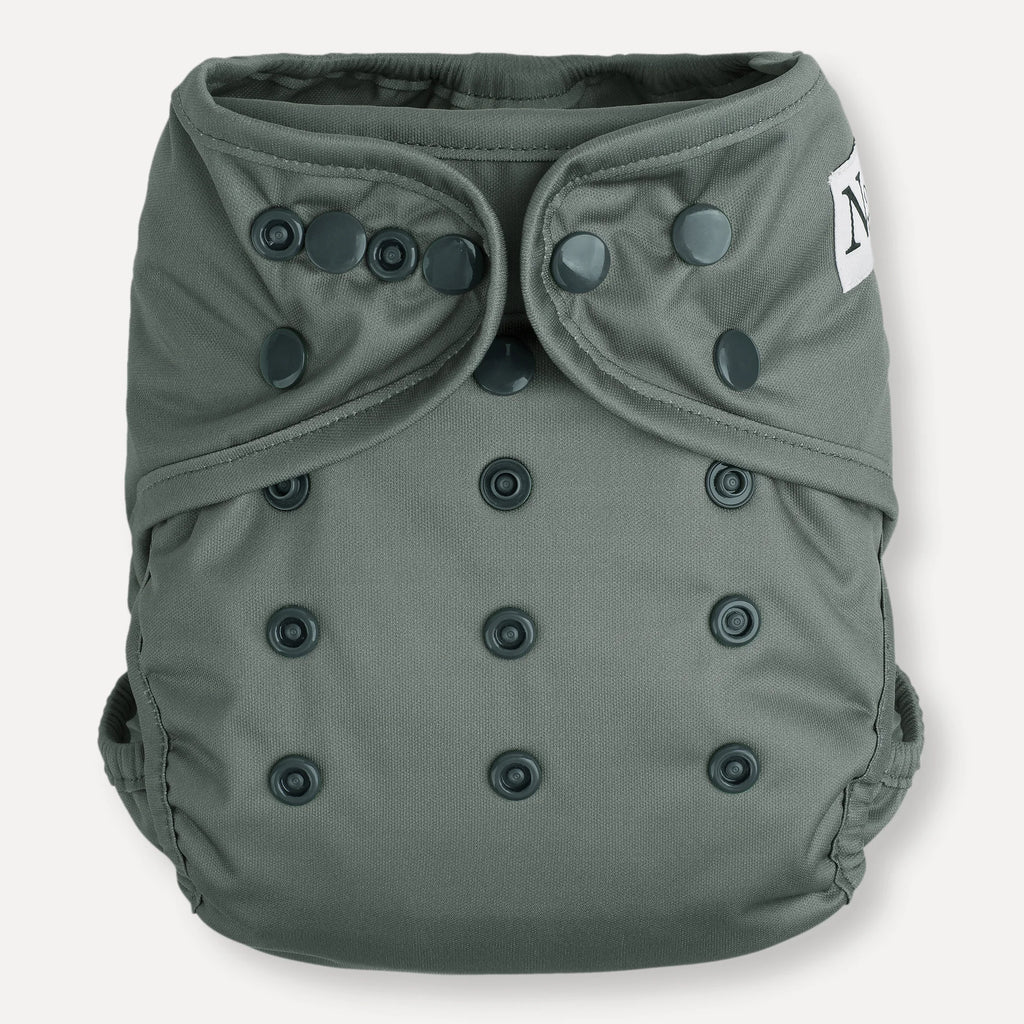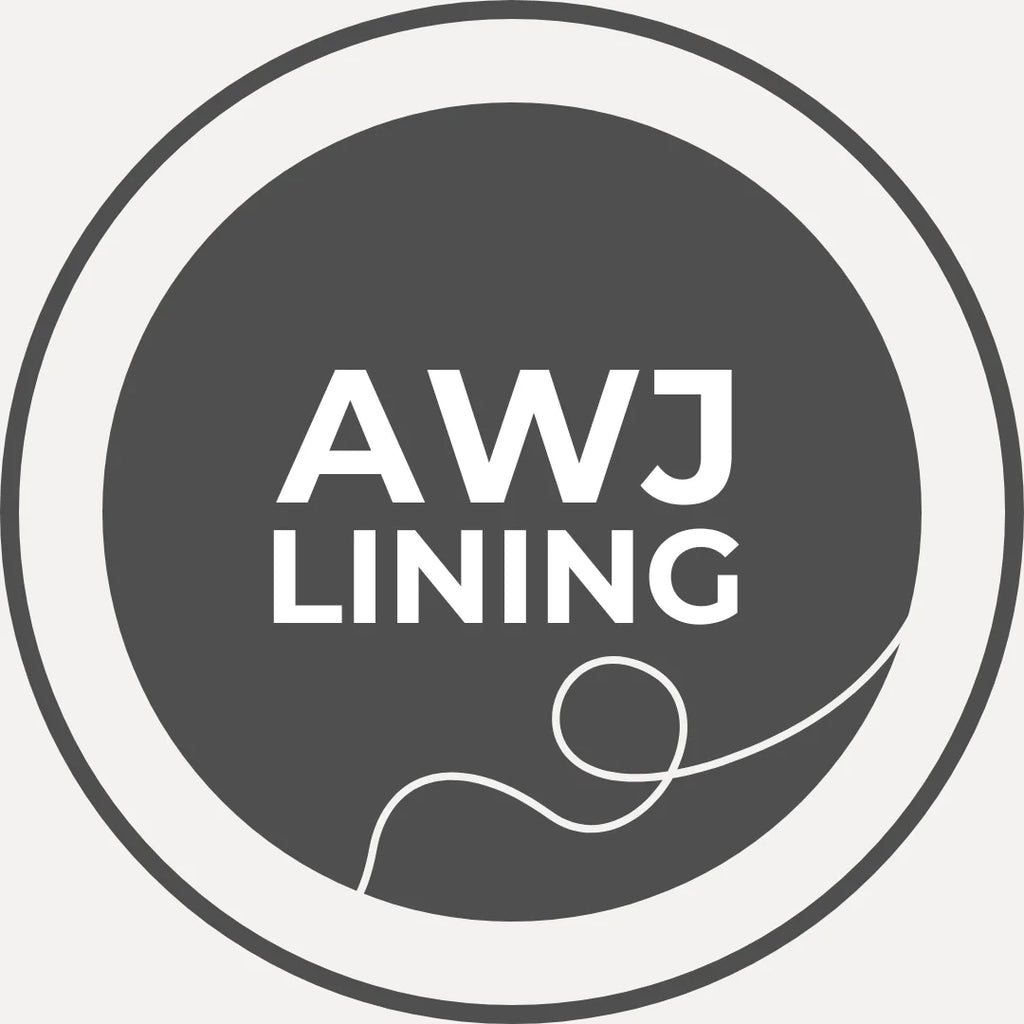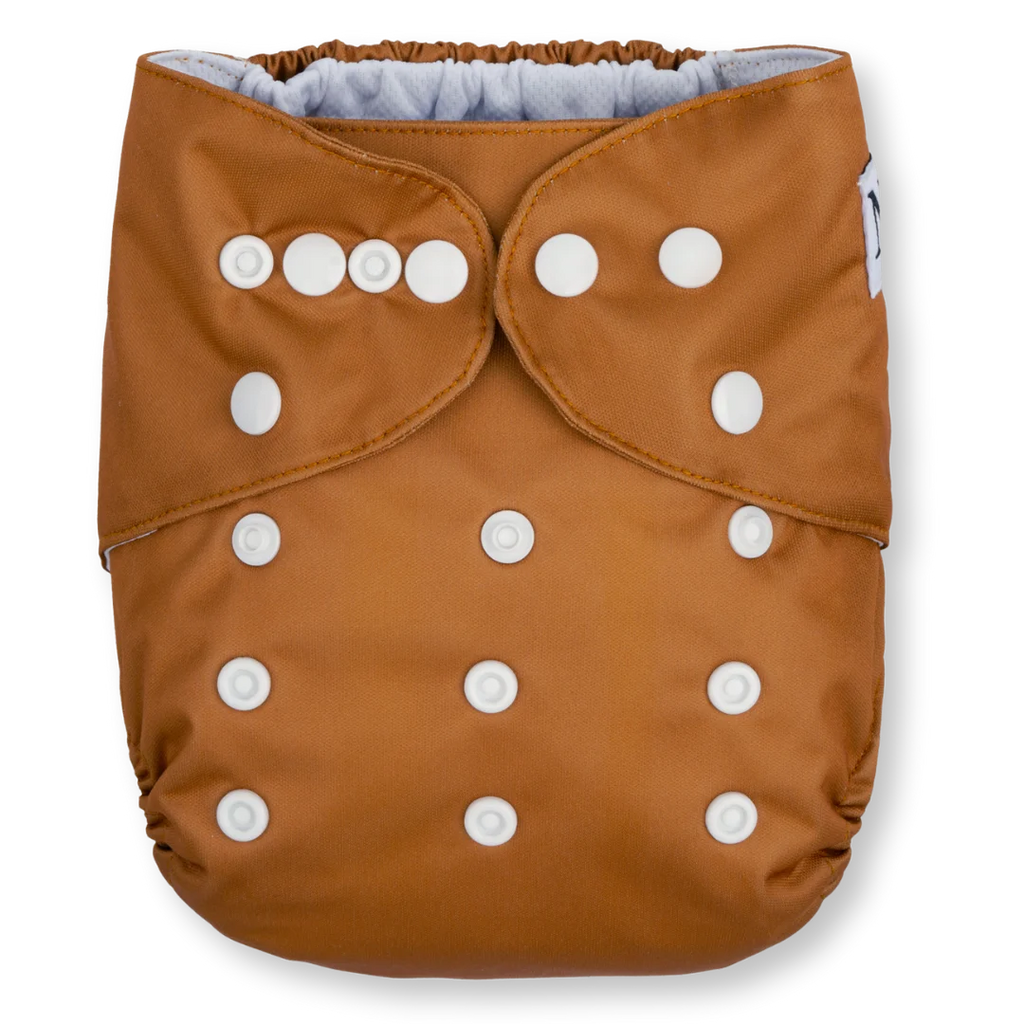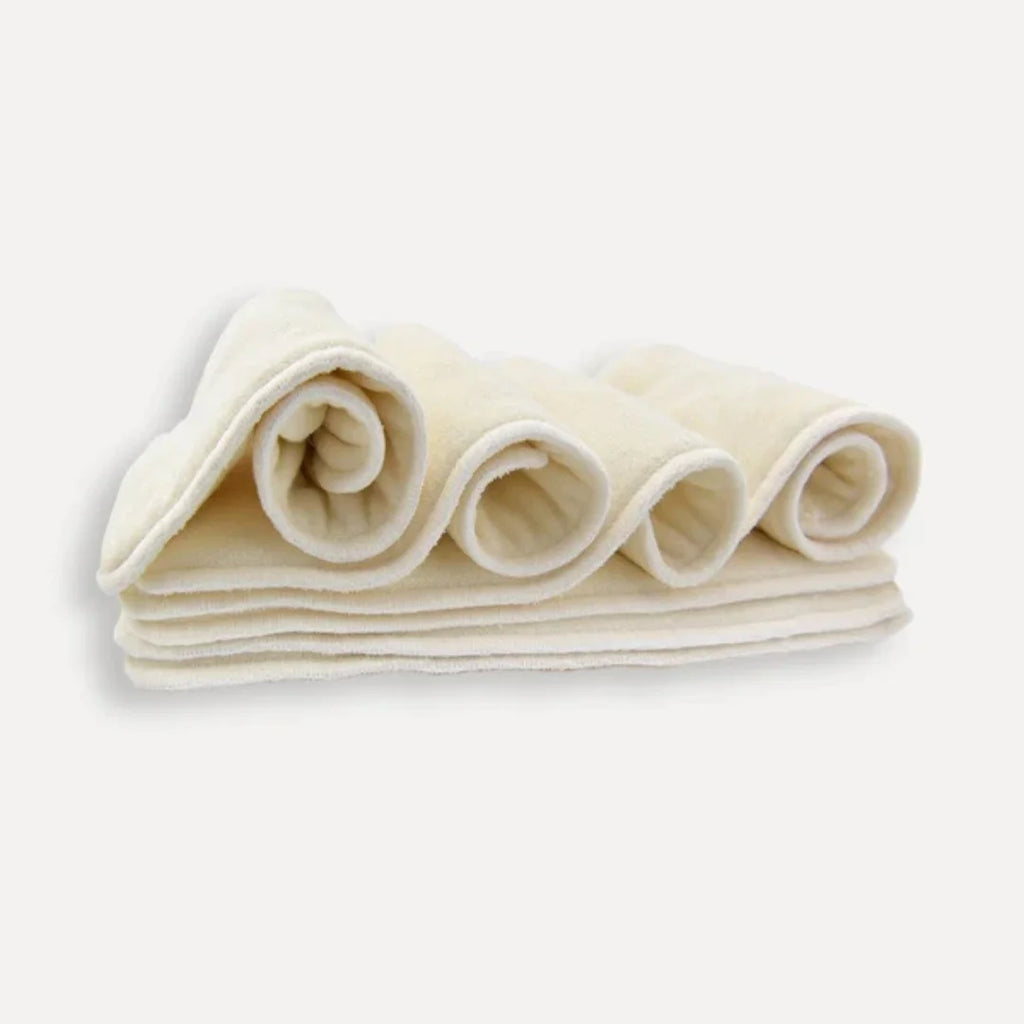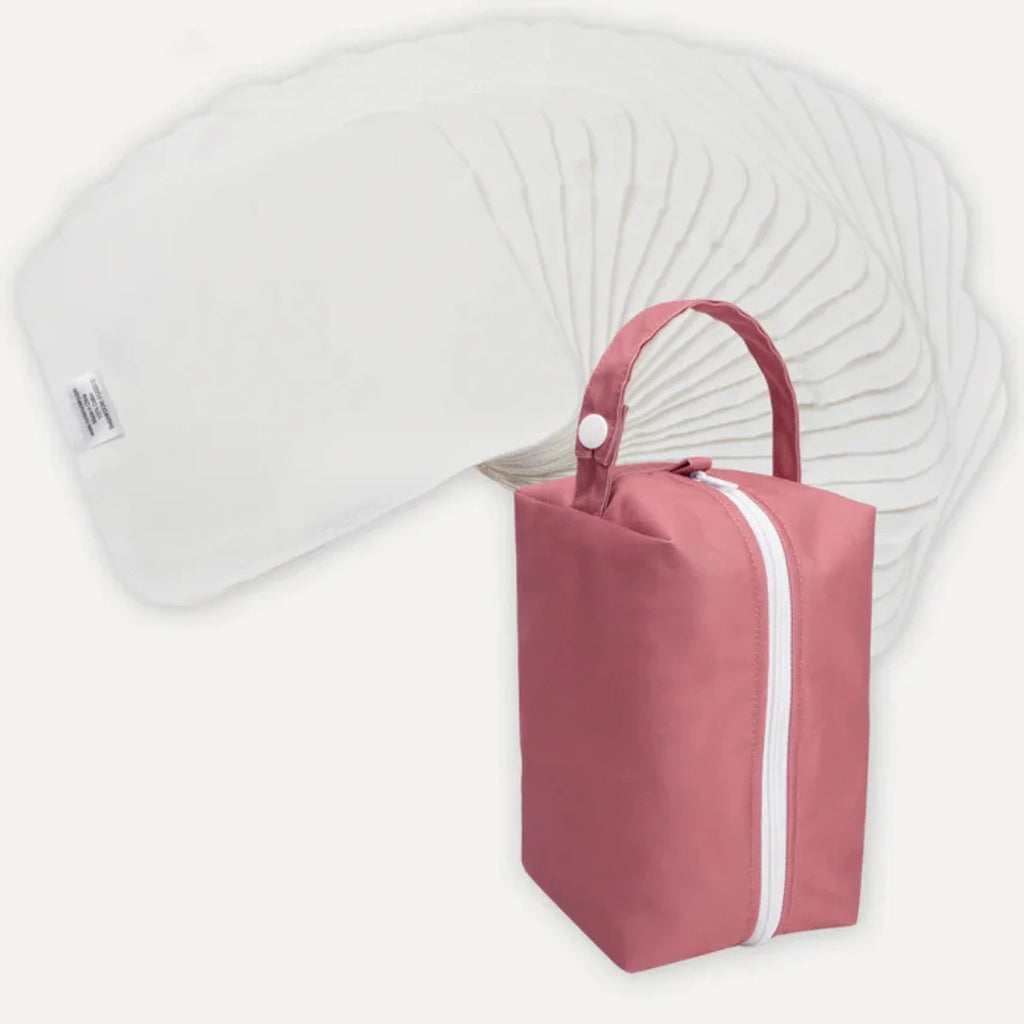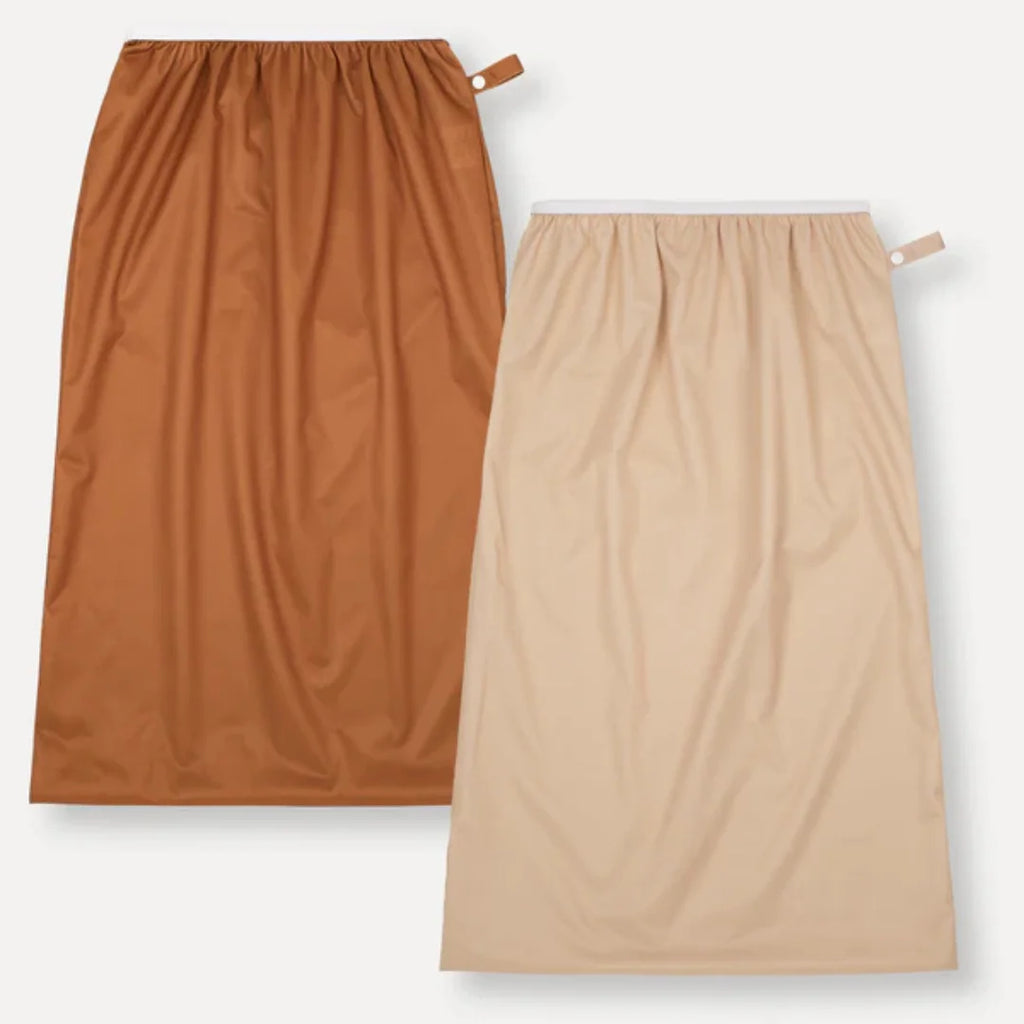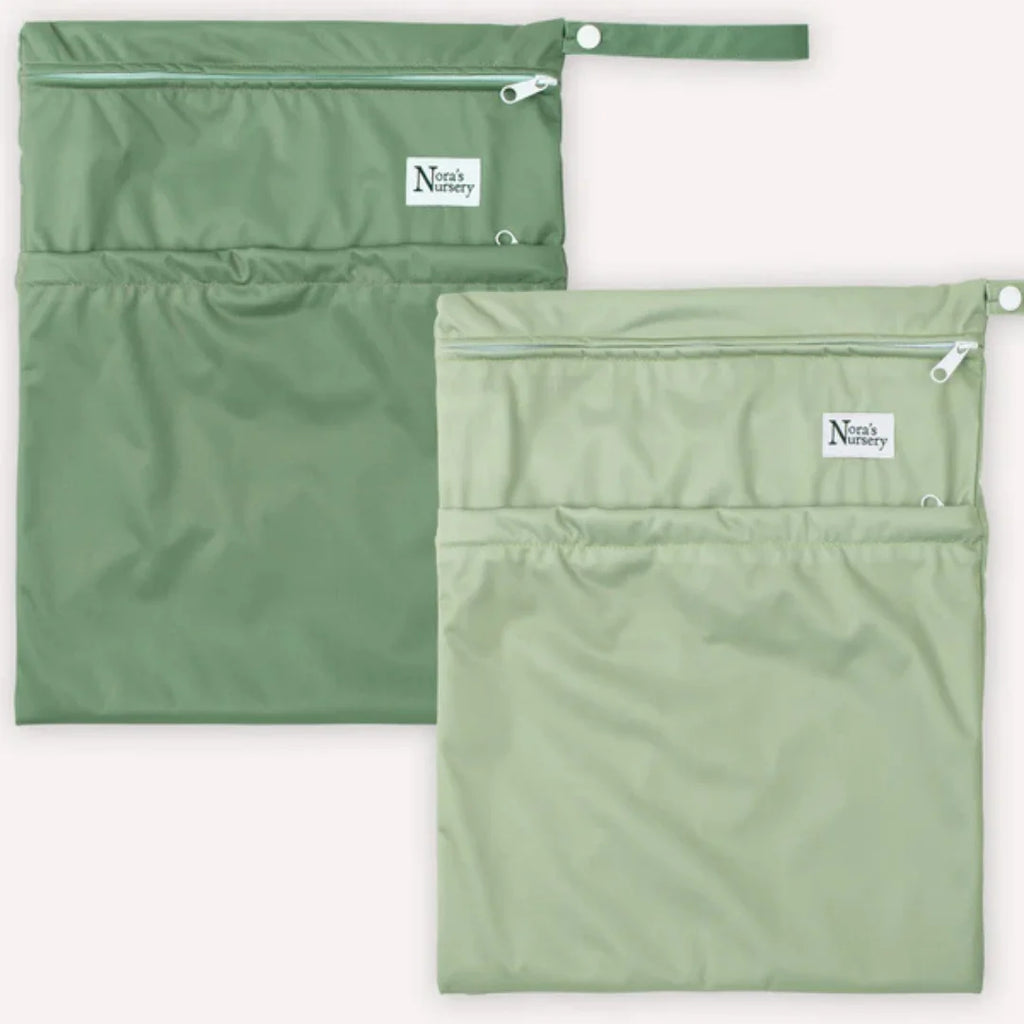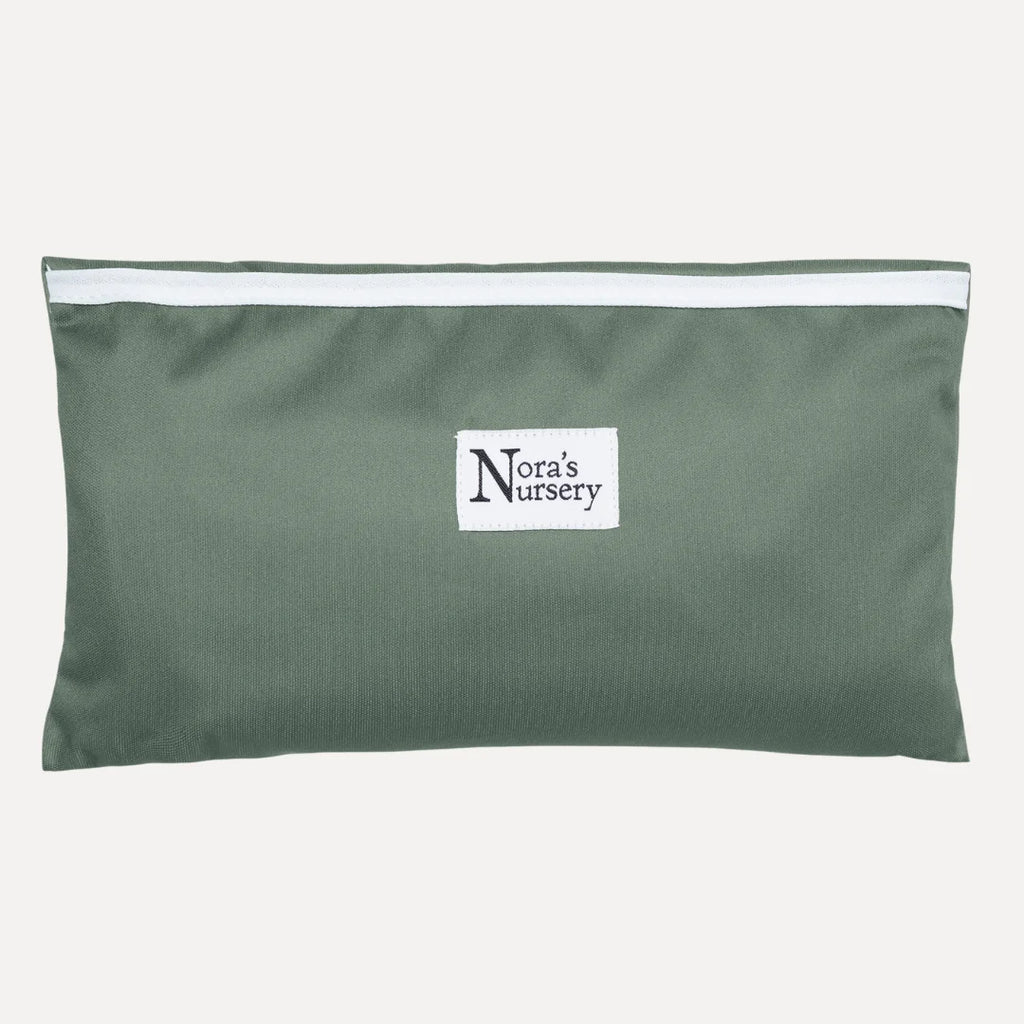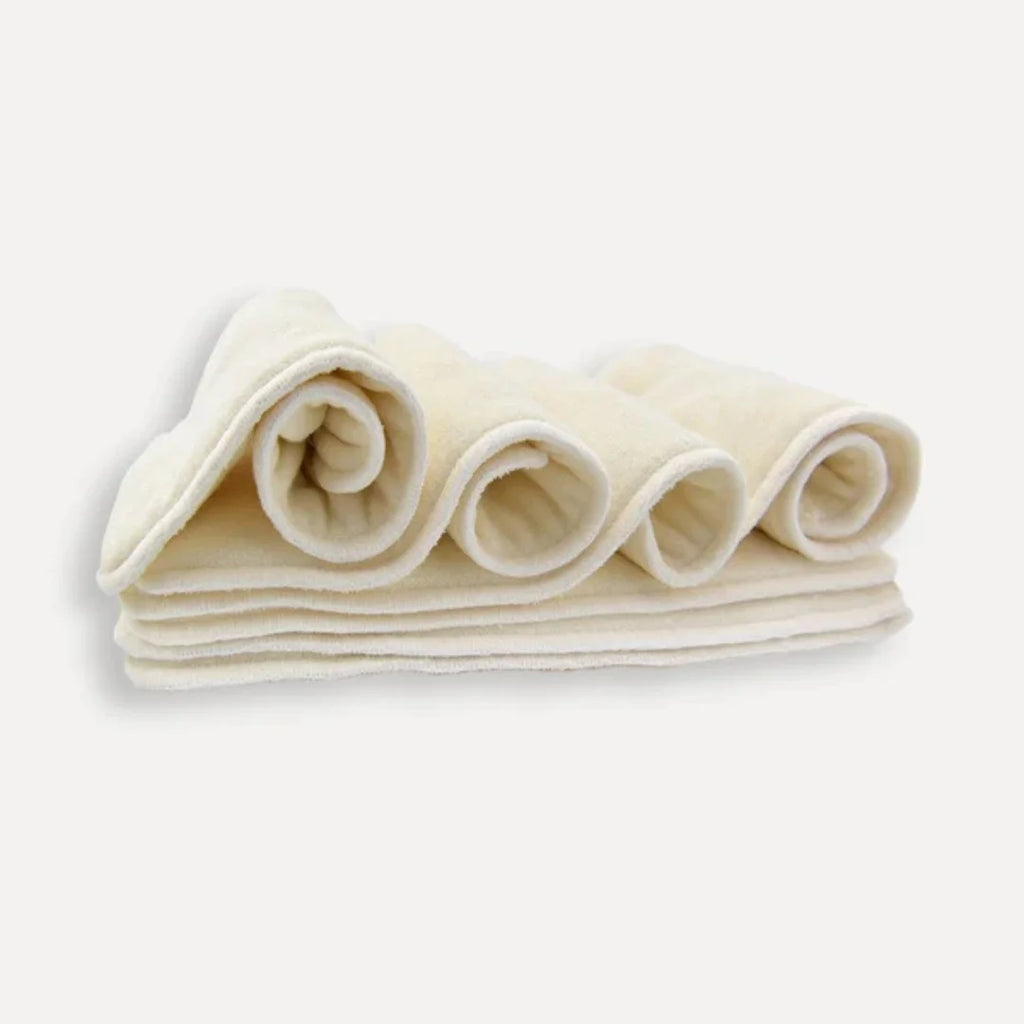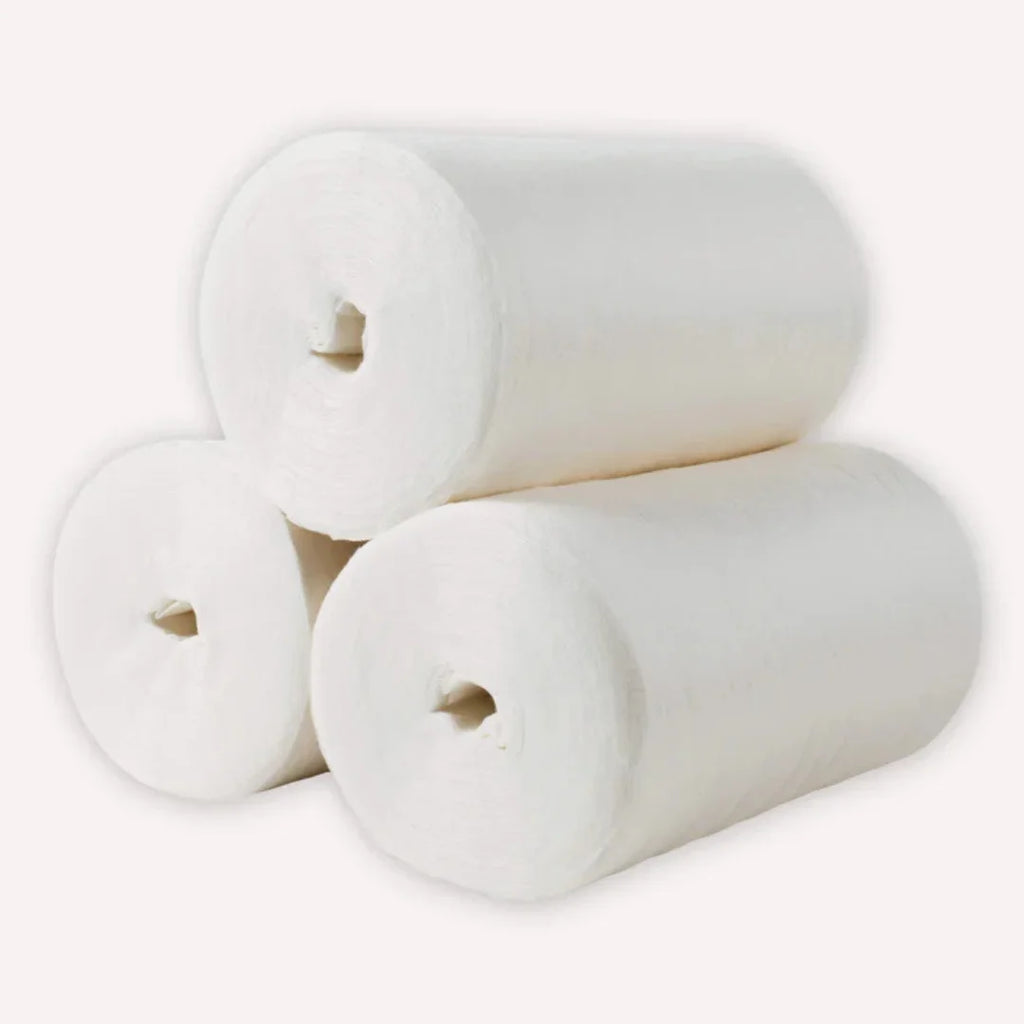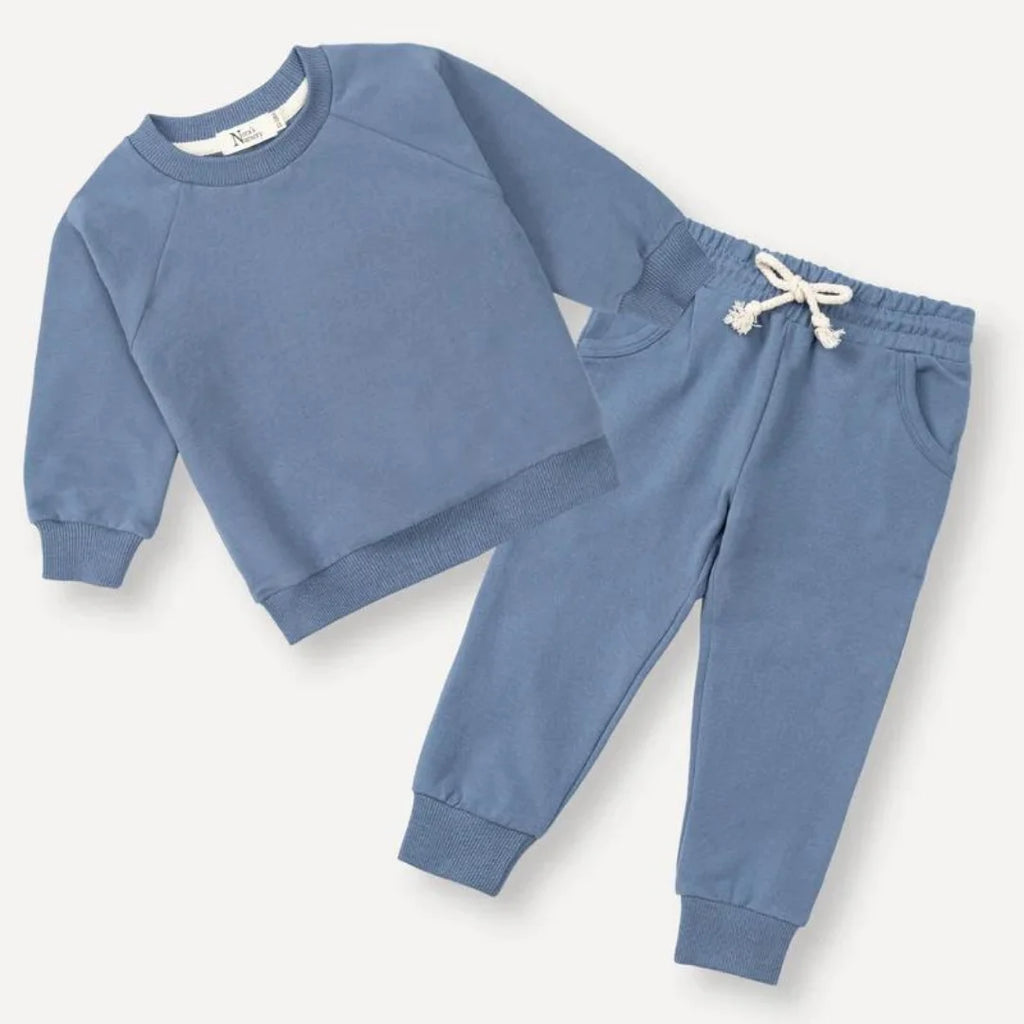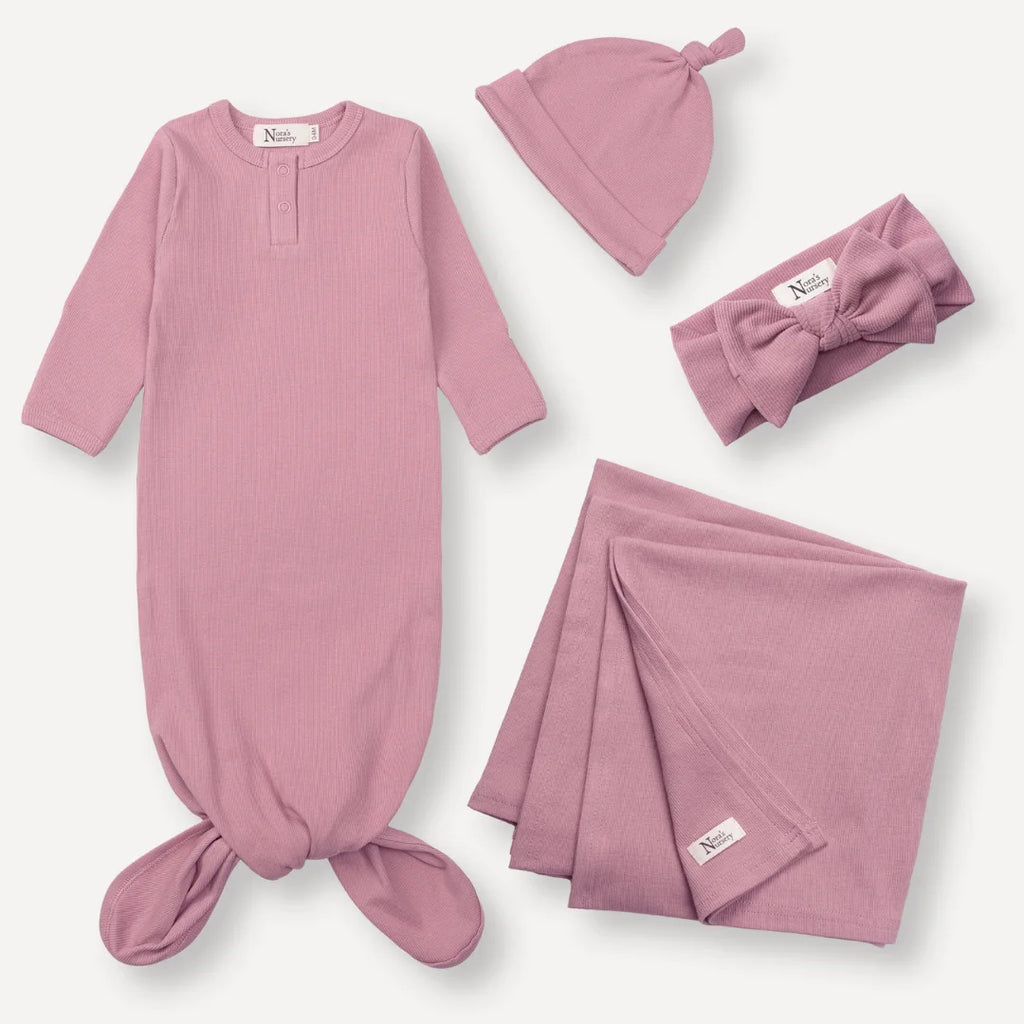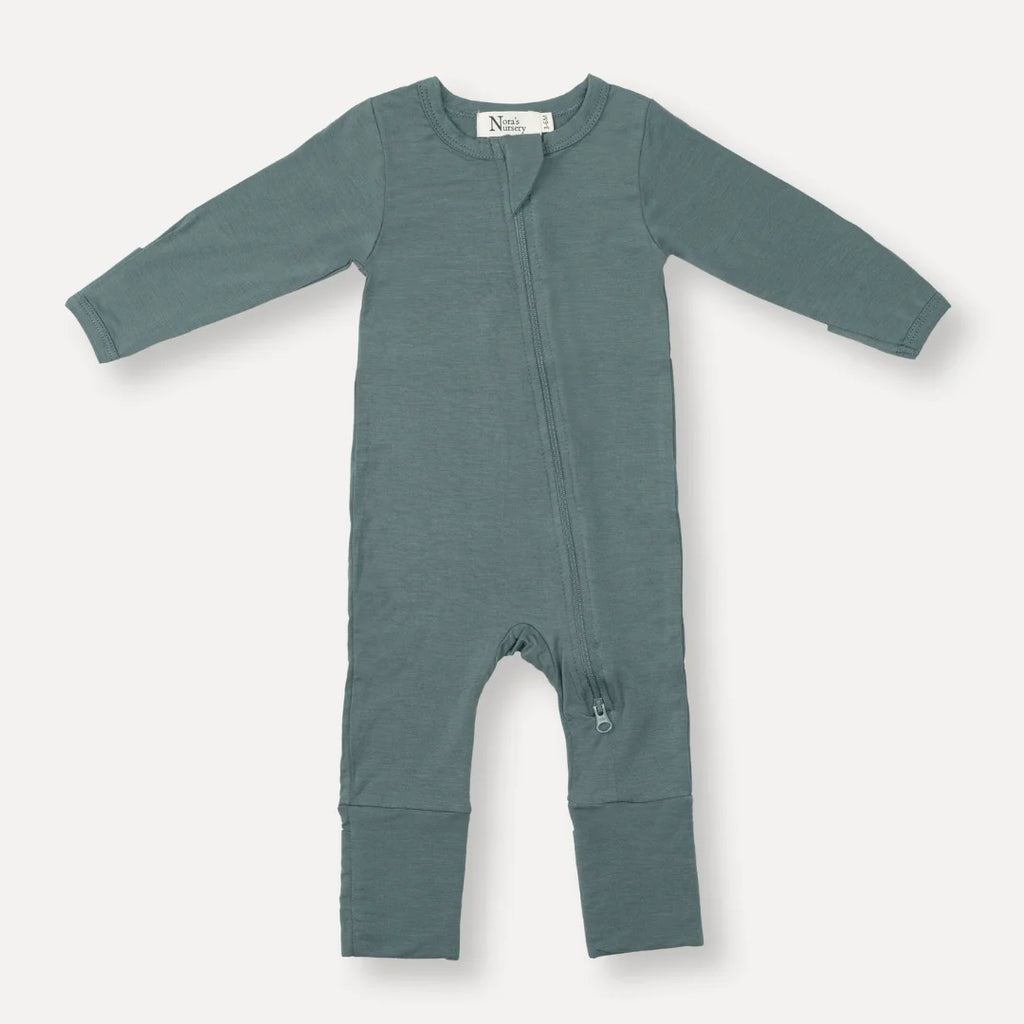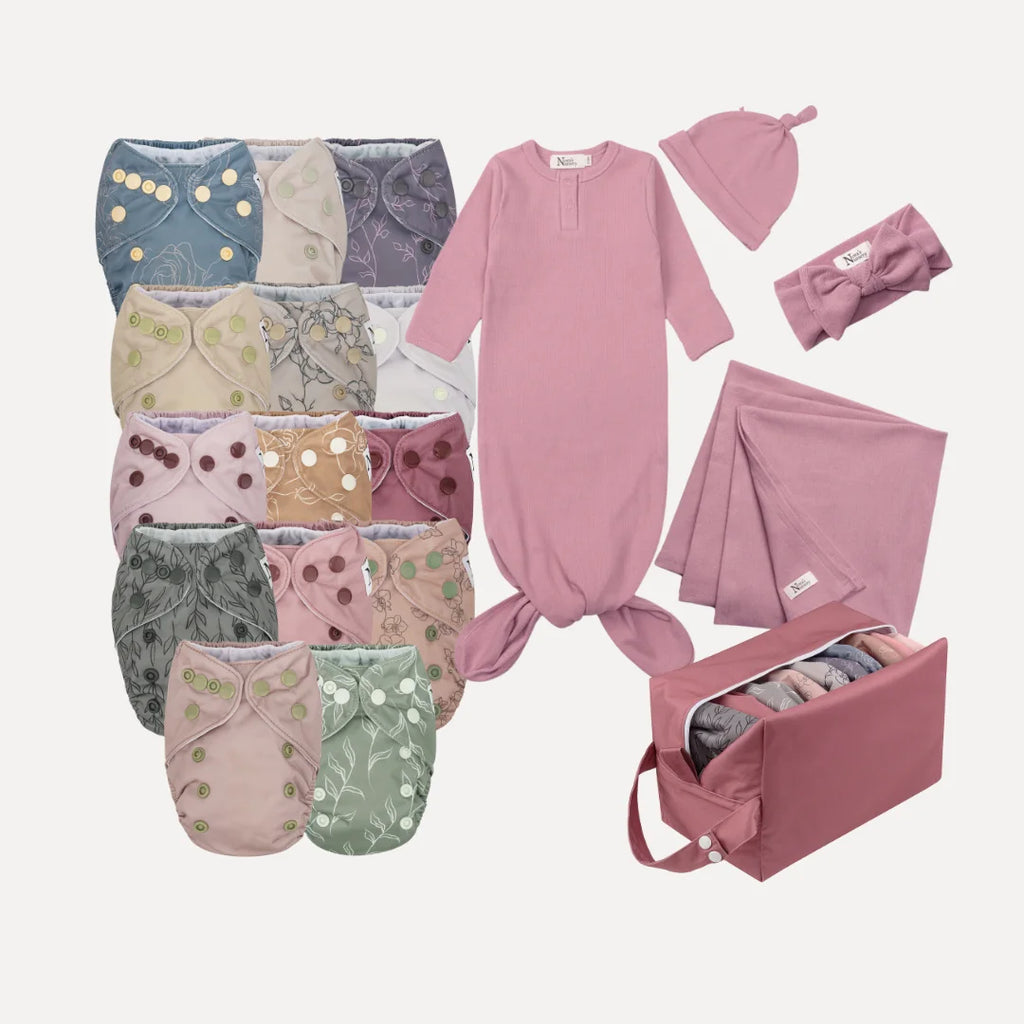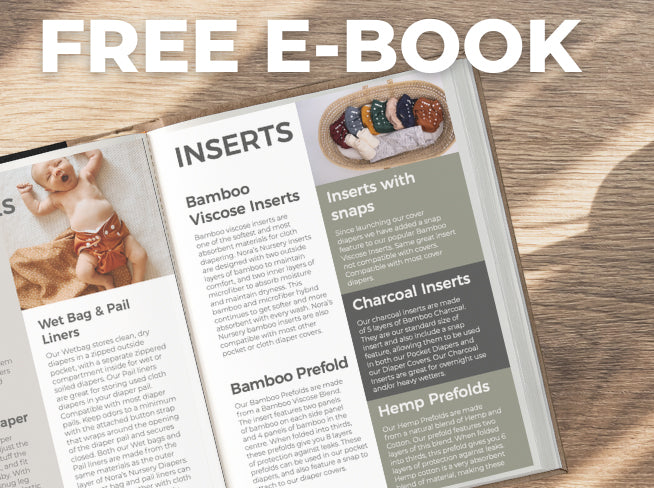Table of Context
Cloth Diapering - Washing 101
It’s no secret that using cloth diapers is environmentally friendly and economical. Cloth diapers are also better for your baby as they can reduce exposure to harmful chemicals that can be found in conventional disposable diapers. For these reasons, cloth diapers have rapidly grown in popularity. Cloth diapers have become easily accessible, simple to use and modern. And let’s not forget, the incredible variety of colors and patterns available make cloth diapering not only adorable, but fun!
For more information on washing cloth diapers
watch the video below.
To continue reading the blog scroll down
Prepping Cloth Diapers and Inserts Before Use
Wondering if you need to prep cloth diapers and inserts? This is an initial step that should be taken to rinse away any natural oils found on fabrics. Prepping cloth diapers and inserts also opens up fibers to ensure adequate absorbency.
Prepping cloth diapers is a crucial step in ensuring their effectiveness and longevity. During the manufacturing process, cloth diapers may retain residues from production, such as oils, chemicals, or natural substances like oils. Prepping involves washing your cloth diapers before use to remove these residues and to help the fabric become more absorbent. Proper prepping not only enhances the diaper's absorbency but also removes any potential irritants that could cause discomfort or rashes to the baby's delicate skin. Additionally, prepping helps to shrink fibers and close any small gaps in the fabric, ensuring a snug fit and preventing leaks. By taking the time to properly prep cloth diapers before use, caregivers can maximize their performance and comfort for their little ones.

Cloth diaper and insert prep is a simple step that involves running your new diapers and inserts through 3 or 4 regular wash cycles. (Follow our Wash Routine Steps below). There is no need to dry in between washes! When prepping cloth diapers and inserts, feel free to throw them in with other household laundry to conserve water and save time. Run your diapers and inserts through a final rinse to ensure that all detergent has been washed away. Allow diapers and inserts to fully air dry or tumble dry on a low/medium heat or delicate dryer setting.
What Happens When You Don't Prep:
When you don’t properly prep cloth diapers, it can lead to several undesirable outcomes. Without prepping, diapers may not reach their full absorbency potential, resulting in frequent leaks and discomfort for the baby. Residual substances left from manufacturing could irritate the baby's sensitive skin, potentially leading to rashes or allergic reactions. Moreover, skipping the prepping process may cause the diapers to shrink unevenly or lose their shape, compromising their fit and effectiveness.Investing time in prepping cloth diapers is essential to ensure their functionality, comfort, and longevity for both you, and your baby.
It's important to note that prepping for different insert materials may require more washes for them to reach full absorbency. The amount of time it takes for your inserts to reach adequate absorption is sensitive to detergent, water hardness levels, and your wash routine!
TESTING YOUR WATER HARDNESS LEVELS
You can find out the exact hardness measure of your water by having it tested. It is always a good idea to test your water, especially when you start cloth diapering. This lets you know what you are working with and how to adjust your washing routine. Having your water tested is not tedious or complicated. A simple way is to purchase water testing strips. Test strips can be found online, and at many local pet stores and hardware stores. In some cases, you can contact your local government or water quality control organization to find out details about your water and its mineral content.
When washing cloth diapers in hard water, use a good water softener for both your rinse and main cycles. If testing indicates your water hardness exceeds 180 ppm, you have very hard water. You should be using a water softener for all your laundering activities. Use about 1/4 of a cup of softening agent per load. If your water hardness is above 250 ppm, consider increasing the amount to 1/2 a cup per load. If you’re water hardness is above 17 ppm but below 180 ppm, using a detergent with an added softening agent might be enough. Click here to find out your water hardness levels
Before testing, make sure you are using a water source close to your washing machine, or ideally the water directly from your washing machine. This will help ensure you are getting accurate results. Some homes are equipped with water softeners or filters in fridges, kitchen sinks, bathrooms, etc. Knowing your water hardness right at the source will help guide your laundry routine.
Not sure if you have hard water? Check out our Hard Water and Cloth Diapers blog to to learn more about locations with hard water, and how you can adjust your cloth diaper washing routine! Also, see our tips on choosing a water softener for cloth diapers and selecting the best detergent for cloth diapers in hard water. Read more on why your water hardness matters for cloth diapers here.

Cleaning Cloth Diapers – Our Recommended Wash Routine
Washing cloth diapers is not as much of a chore as you might think – just follow these simple guidelines! See below for our step by step recommendations to curate the perfect wash routine for your cloth diapers!
Step 1: Rinse
Start by flushing any solids in the toilet and run your diapers and inserts through a cold water rinse cycle. There is no need to use detergent during this step – this initial rinse helps to remove any remaining solid waste, flushes away urine, and is a helpful step before a thorough washing.
Newborn poop
Rinsing newborn poop from cloth diapers for formula-fed (FF) and exclusively breastfed (EBF) babies, is a vital step in maintaining diaper hygiene and effectiveness.
For EBF babies, whose stool is typically runny and water-soluble, a simple pre-rinse in cold water can help prevent staining and remove as much poop as possible before, they go into the washing machine.
For formula-fed babies, whose stool tends to be thicker and more solid, a diaper sprayer attachment or handheld bidet can be invaluable tools for pre-rinsing. After removing excess waste, diapers can be rinsed, and stored in a diaper pail or wet bag until laundry day. To further help in stain prevention/removal and odor control, adding a small amount of detergent during the pre-rinse cycle can be beneficial. Additionally, exposing diapers to sunlight during the drying process can naturally bleach and disinfect them, effectively tackling any lingering stains or odors. See our removing stains blog for more information!
Rinsing cloth diapers after changing your baby is essential for maintaining cleanliness and hygiene. Removing waste promptly helps prevent odors from lingering and minimizes the risk of bacterial buildup. Additionally, rinsing can prevent stains from setting into the fabric, prolonging the lifespan of the diapers. By incorporating rinsing into your diaper-changing routine, you not only ensure a fresher environment for your baby but also contribute to the lifespan of your cloth diapers overtime.
Step 2: Wash
We recommend you wash your cloth diapers, and inserts every 2-3 days. Wash cloth diapers and inserts using a normal warm or hot water cycle. During regular washes, use water that is less than 95oF to increase the lifespan of your diapers. When cleaning cloth diapers that are extremely soiled or when tackling build-up, you can increase the water temperature - but ensure the water is less than 115oF. When you wash cloth diapers and inserts, never boil them as this can cause damage. Use the maximum water level setting and the manufacturer recommended amount of laundry detergent. Choose a laundry detergent for cloth diapers that is safe for your diapers and safe for your baby.
Different Materials, Different Care?
Not all cloth diaper materials are created equal—so when it comes to washing and drying, a little extra attention can go a long way in keeping them absorbent and long-lasting!
When washing, it is generally recommend to wash on warm/hot water cycles (never exceeding 95F) as it is the most powerful option for deep cleaning everyday fabrics. When it comes to washing cloth diaper inserts, different temperatures can actually cause more harm to certain materials.
The chance of materials like Cotton, and Hemp shrinking in the wash increases the warmer you wash. At 90-95F degrees, the fabric will shrink more than at 60F degrees. We recommend you wash lower than 60 degrees if you want to prevent shrinkage.
To help avoid shrinking your cotton inserts, and pre-folds, alternating between cold and hot washes, and air dry or low-heat dry when possible, is recommended!
Other materials, like microfibre and TPU (the waterproof outer layer), do best with moderate heat to prevent damage.
When drying, air drying is always a great option to extend the life of your diapers, but if using a dryer, stick to low heat (tumble dry on a delicate) —especially for covers and pocket diapers—to keep elastics and waterproof layers in top shape. A little material-specific care goes a long way toward keeping your stash in great condition! See our section on drying below for more details!

TIP: Effectively washing cloth diapers will depend on your washing machine and if you have hard or soft water. A top loading machine allows you to better control the amount of water being used and provides a vigorous wash. A front loading high efficiency machine may require you to manually adjust the amount of water you use to ensure a thorough clean. With hard water, you may need a bit more detergent. With soft water, you may require some extra rinsing to remove all traces of detergent.
Want to read about our top recommendations for cloth diaper safe detergent? Click here to read more
Fabric softener, and why you shouldn’t use it!
Fabric softeners often contain chemicals and additives that can leave a residue on the fabric, reducing its absorbency. This residue can build up over time, leading to repelling issues where the diapers are less effective at absorbing moisture. Moreover, fabric softeners can also coat the fibers of the diaper, reducing breathability and potentially causing irritation to the baby's skin. To maintain the absorbency and effectiveness of cloth diapers, it's best to avoid using fabric softener. This ensures that the diapers remain soft, absorbent, and gentle on the baby's delicate skin without compromising their performance.
Want to read more about using cloth diapers with Hard Water? Click here to read more.
Can I Bleach My Diapers?
Bleach can be tough on fabrics. Using bleach on your cloth diapers is not recommended to be used on a regular basis, and should only be used when needing to kill bacteria.
Bleaching your diapers may be required if you are dealing with any buildup issues, ammonia, or yeast. If you find yourself needing to bleach cloth diapers, focus on the inserts where bacteria and stink primarily live. Throw freshly cleaned diapers into a tub, sink, top-loading washing machine, or other container for a 30-minute cold water bleach soak. About ½ cup of bleach is enough for a top-loading machine filled to medium capacity or an average sized bathtub filled half-way. Less bleach is required for a smaller sink or container – about one tablespoon of bleach per gallon of water. After finishing your bleach soak, continue through a deep cleaning or stripping routine. See our blog for details.
Step 3: Extra Rinse
A final cold or warm water rinse is recommended to wash away any remaining detergent. This is an optional step if you have soft water or find your machine doesn’t fully wash away detergent during its regular cycle.
A final rinse for cloth diapers after the main wash is crucial as it helps to thoroughly wash away any remaining detergent residue. Detergent that is left behind after washing cloth diapers and inserts can cause residue build-up and can result in repelling. Detergent buildup not only reduces the absorbency of the fabric but can also lead to unpleasant odors and potential skin irritations for the baby.
PRO TIP: If you have hard water, make sure you are incorporating water softener into ALL cycles (rinse/washes). Leaving it out of any step can run the risk of mineral buildup, which can lead to odors, repelling, and the need to strip your diapers. Read all of our tips for washing cloth diapers in hard water in our blog!
Step 4: Dry
To lengthen the lifespan of your diapers, your best bet is to tumble dry on a delicate or low heat setting. Hang drying cloth diapers is also a great way to protect your diapers and save energy! When drying cloth diapers, avoid dryer sheets as this can cause residue build-up.
TIP: hang drying cloth diapers outside in the sun not only helps dry your diapers quickly, but the sun is a tried and tested way to remove stubborn stains!
Choosing the Best Laundry Detergent for Cloth Diapers
When choosing a laundry detergent for cloth diapers, look for high cleaning power while avoiding fragrances and perfumes, dyes, optical brighteners and bleach. Avoid harsh enzymes if your baby has sensitive skin. Consider natural, unscented, non-toxic and hypoallergenic brands that are free of phosphates and other harsh chemicals. Ensure your cloth diaper detergent does not contain fabric softeners as this can cause residue build-up over time.
In choosing the best detergent for cloth diapers, look for detergent with high concentrations of surfactants.
What Are Surfactants? Surfactants are the core stain removers that we look for in detergents. Surfactants help break up stains and disperse dirt that otherwise wouldn’t dissolve in water, which is why they are important in a detergent for cloth diaper laundry.
Like surfactants, enzymes also help break down stains and boost cleaning power – just be cautious with synthetic enzymes if your baby has sensitive skin. Avoid excess fragrances, dyes, bleaches and other harsh chemicals. Make sure your detergent does not contain fabric softener as this will cause repelling issues and build up on your diapers over time.
Ultimately, the perfect cloth diaper detergent will:
-
Provide a thorough cleaning, leaving your diapers odorless after washing
-
Increase the absorbency of your diapers and deter leaking
-
Keep baby’s bum rash-free
-
Be easily accessible and affordable for your family
-
Work safely and efficiently in your washing machine
Need some more help choosing a laundry detergent for cloth diapers? Visit Nora’s Nursery’s blog describing the Best Detergent for Cloth Diapers! You can also check out the Detergent Index through Fluff Love University.
Removing Stains
Staining on your cloth diapers is normal. Staining should not affect absorbency so long as your diapers are regularly and thoroughly cleaned. When fighting stains, avoid bleach and boiling water as they can cause damage and reduce the overall lifespan of your diapers. As previously discussed, the best stain removal tip is to dry your diapers in the sun. Lay your diapers on a flat surface or hang them on a drying rack or clothesline – stains nearly always come out after a few hours in the sun. Using disposable liners can also minimize staining.
Stains on cloth diapers are an inevitable aspect of the cloth diapering journey, but they don't signify failure or inadequacy. In fact, they're quite normal and can be viewed as badges of honor, showcasing the active use of eco-friendly alternatives to disposables. Cloth diapers, unlike their disposable counterparts, often leave behind remnants of certain substances, especially from breastfed babies, due to the natural pigments present in their waste. Additionally, minerals in water or residues from detergents can contribute to staining.
Need some more information on the different kinds of stains you may see on your cloth diapers, and ways to remove them? Visit our newly updated blog on Removing Stains in Cloth Diapers
Dealing with Residue Build-Up and Repelling
Not sure if your cloth diapers are repelling? Think you have residue build-up? If you find that your cloth diapers are no longer absorbing properly, you are having trouble getting rid of smells, or your baby is getting a rash, you likely have residue build-up.

Residue build-up can be the result of the following factors:
1. Washing in hard water that isn’t treated with water softener: Hard water is the result of naturally high mineral content in your water. The high concentrations of calcium and magnesium found in hard water are deposited on faucets, fixtures, and on your fabrics. When cloth diapers are washed in hard water without proper treatment, the high mineral content can reduce the cleaning performance of your detergent, and can leave clothes dull and dingy.
When washing cloth diapers in hard water, use a good water softener for both your rinse and main cycles. If testing indicates your water hardness exceeds 180 ppm, you have very hard water. You should be using a water softener for all your laundering activities. Use about 1/4 of a cup of softening agent per load. If your water hardness is above 250 ppm, consider increasing the amount to 1/2 a cup per load. If you’re water hardness is above 17 ppm but below 180 ppm, using a detergent with an added softening agent might be enough. Find out your water hardness levels here!
Using a water softener or adding a water softening agent to the wash can help prevent this issue. Want to learn more about washing cloth diapers in hard water? Check out our blog!
2. Urine/waste that isn’t fully washed away: If urine and waste aren't fully washed away during the laundering process, residual matter can accumulate on the fabric over time, leading to stubborn odors and reduced absorbency. Proper agitation and thorough rinsing are essential to ensure that all waste is effectively removed from the diapers during the wash cycle.
3. Using too much or too little laundry detergent/ using an unsafe cloth diaper detergent: Overuse or underuse of laundry detergent can both contribute to residue buildup on cloth diapers. Using too much detergent can leave behind excess residue, while using too little may not sufficiently clean the diapers. Additionally, using detergents that contain additives, fragrances, or fabric softeners not designed for cloth diapers can also result in buildup and reduce absorbency. It's important to use an appropriate amount of a detergent specifically formulated for cloth diapers to ensure effective cleaning without residue buildup. Check our top Detergent Recommendations
4. Using fabric softeners: Fabric softeners contain chemicals that can leave a coating on the fabric, reducing absorbency and causing repellency issues with cloth diapers. This residue can accumulate over time, leading to buildup and decreased performance of the diapers
5. Using unsafe cloth diaper diaper creams: Certain diaper creams contain ingredients that can leave a residue on cloth diapers, leading to buildup and reduced absorbency. Petroleum-based ingredients, zinc oxide, and other heavy creams can create a barrier on the fabric, making it less effective at absorbing moisture. Using cloth diaper-safe creams or using a liner to protect the diapers can help prevent residue buildup and maintain their performance. Want to learn more? Check out our blog on Diaper Creams and Cloth Diapers
You can test if you are having an absorbency issue by laying your clean diapers flat and pouring a small amount of water on them. Apply a bit of pressure. The inserts should absorb the water. If the water ‘wicks’ away and does not absorb into the insert, you likely have a residue problem.
Fixing Residue Build-Up & Stripping Cloth Diapers
For a quick fix to residue build-up, start by washing your cloth diapers in a regular wash. Make sure to use the right amount of detergent as per the manufacturer instructions. Follow with two or more hot water cycles without detergent. Dry normally.
If the problem persists, review the amount of detergent you are using, taking into consideration whether or not you have hard or soft water.
TIP: wash cloth diapers with some baking soda added in the regular wash cycle. The high PH in baking soda helps neutralize ammonia smells. But do not make this part of your regular washing routine as this could cause your diapers to fail over time.
You may want to strip your cloth diapers every so often to address severe build-up and repelling. Read our full blog for more information! Cleaning cloth diapers using a product like RLR Laundry Treatment can help tackle smells and leaks. RLR is made from sodium carbonate, also known as washing soda. Washing soda is similar to baking soda, and provides a deep clean of fibers, removing minerals, urine deposits and detergent residue. It is a non-toxic option that is safe for your cloth diapers and your baby. Because of the strong cleaning power of washing soda, only use this when washing cloth diapers that have extreme residue build-up. If necessary, run an extra rinse to wash away any remaining powder.
Tips for keeping your cloth diapers clean, and prolonging their lifespan!
-
Make sure you're using cloth diaper safe detergent
-
Make sure you're using cloth diaper safe diaper creams
-
Use a water softener if you have hard water
-
Don’t overdo it or underdo it with detergent
-
Don't use water that is too high/hot above - less than 95oF to increase the lifespan of your diapers
-
Use disposable liners if needed! (link)
-
Rinse your diapers after use (covers, and inserts!)
-
Make sure your washing every 2-3 days

And there you have it. Now you know the best ways to prep, and clean your cloth diapers! Finding the right wash routine for cloth diapers may take some trial and error. Factors such as water hardness, detergent, machine type, and diaper/insert material can all influence the effectiveness of the wash routine.
You may need to experiment with different water temperatures, wash cycles, and detergent amounts to achieve optimal cleanliness and absorbency for their cloth diapers. Want to learn more about our inserts, what they are best for, and their absorbency levels? Check out our Insert Absorbency Chart!
It's essential to be patient and persistent during this process, and always reach out to us for support, and guidance if needed! For more information on cloth diapering, visit Nora’s Nursery’s ‘How-To’ Blogs!
Want to learn more? Check out our tiktok!
@norasnursery If you've checked out our recent revamp of our Washing 101 Blog, you may have noticed our added information on fabric softener, and why we say no to using it with cloth diapers! 🚫 Did you know that fabric softeners often contain chemicals and additives that can leave a residue on the fabric? This residue can build up over time, leading to repelling issues where the diapers are less effective at absorbing moisture. Fabric softeners can also coat the fibers of the diaper, reducing breathability and potentially causing irritation to the baby's skin. 🤯 To maintain the absorbency and effectiveness of cloth diapers, we will always recommend to avoid using fabric softener to help ensure your diapers remain soft, absorbent, and gentle on the baby's delicate skin!🤗 If you haven't yet, go read our our Washing 101 blog where we go over all things from diaper prep, and the best detergents to use, to understanding washing hard water, and curating your perfect wash routine! ✨️ Link In Bio! ✨️
♬ original sound - norasnursery
@norasnursery You just got your new pack of cloth diapers... You Know The Drill! It's Time To Prep! 🧺 #norasnursery #clothdiapers #washroutine #prep ♬ original sound - norasnursery


